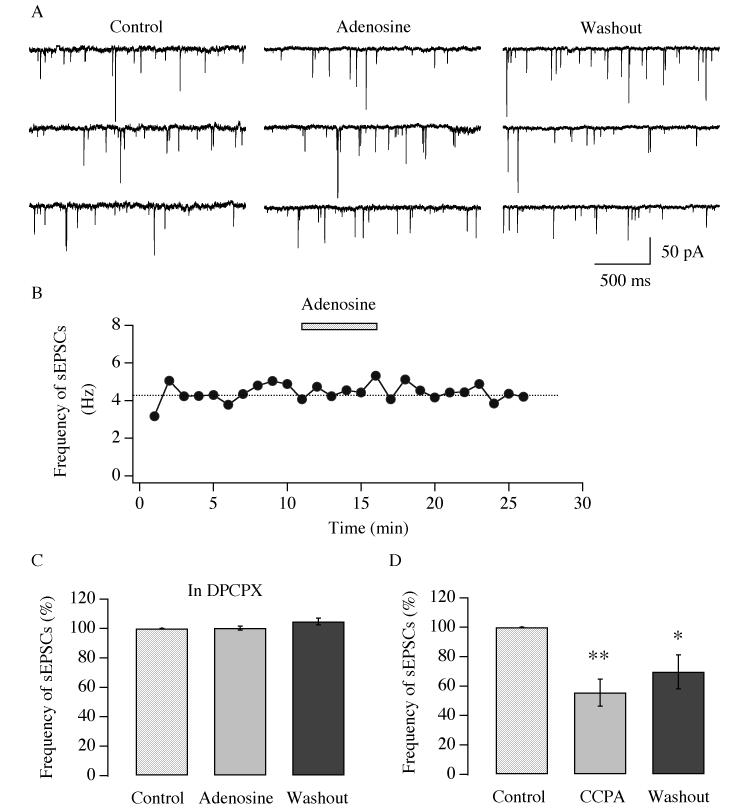Fig.5.
A1 adenosine receptor is responsible for the effect of adenosine in hypocretin/orexin neurons. Whole-cell recordings were performed in hypocretin/orexin neurons held at −60 mV under voltage clamp. Bicuculline (30 μM) was present in all solutions. In the presence of DPCPX (3 μM), a selective A1 receptor antagonist, adenosine (100 μM) was applied to recorded neurons after a stable recording of sEPSCs was obtained and its effect on the frequency of sEPSCs was monitored. Sample traces are presented in A and the time course of a typical experiment is shown in B. Application of adenosine is indicated by the filled bar above the time course plotting. C, pooled data from all neurons examined in our experiments show that adenosine does not inhibit the frequency of sEPSCs in the presence of DPCPX (P>0.05, ANOVA). D, experiments were performed in ACSF containing bicuculline (30 μM). After a stable recording of sEPSCs was obtained, a selective A1 receptor agonist, CCPA was applied to the recorded neurons. Data from all tested hypocretin/orexin neurons are pooled and presented here. The frequency of sEPSCs significantly declined in the presence of CCPA and after its removal (**, p<0.01; *, P<0.05, ANOVA).

